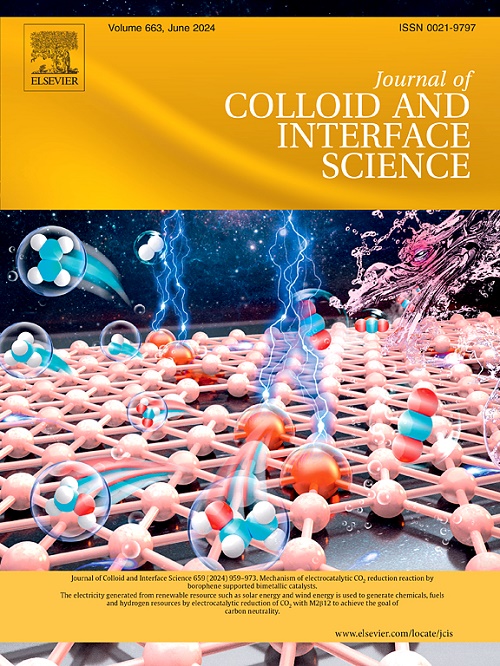Highly active FeNbO4/NiFeOOH heterojunction induced by coordination activation for efficient and stable industrial water oxidation
IF 9.4
1区 化学
Q1 CHEMISTRY, PHYSICAL
引用次数: 0
Abstract
NiFe-oxyhydroxide (NiFeOOH) derived from in situ reconstruction is considered a genuinely active species in the alkaline oxygen evolution reaction (OER). However, the robustness of its durability remains a subject of debate and challenge. In this work, a pre-catalyst FeNbO4/NiFeC2O4, incorporating high valence metals, was first prepared through hydrothermal-low temperature calcination with oxalic acid as a ligand, and then reconstructed into FeNbO4/NiFeOOH under oxidative conditions. Performance tests revealed that FeNbO4/NiFeOOH required only 281 mV to achieve a current density of 500 mA cm−2, while demonstrating exceptional durability. Notably, when assembled into an anion exchange membrane (AEM) electrolytic cell, an ultrahigh current density of 1 A cm−2 was achieved at 1.88 V. Physical characterization showed that the coordination activation of oxalate not only induced the formation of the corrosion-resistant FeNbO4 phase, which enhances stability via partial pressure, but also triggered reconstruction through its oxidative dissolution. Density functional theory (DFT) calculations revealed that the reconstructed FeNbO4/NiFeOOH heterogeneous interface significantly improves the adsorption of oxygenated intermediates, resulting in a reduced energy barrier for the rate-determining step (RDS).

求助全文
约1分钟内获得全文
求助全文
来源期刊
CiteScore
16.10
自引率
7.10%
发文量
2568
审稿时长
2 months
期刊介绍:
The Journal of Colloid and Interface Science publishes original research findings on the fundamental principles of colloid and interface science, as well as innovative applications in various fields. The criteria for publication include impact, quality, novelty, and originality.
Emphasis:
The journal emphasizes fundamental scientific innovation within the following categories:
A.Colloidal Materials and Nanomaterials
B.Soft Colloidal and Self-Assembly Systems
C.Adsorption, Catalysis, and Electrochemistry
D.Interfacial Processes, Capillarity, and Wetting
E.Biomaterials and Nanomedicine
F.Energy Conversion and Storage, and Environmental Technologies

 求助内容:
求助内容: 应助结果提醒方式:
应助结果提醒方式:


